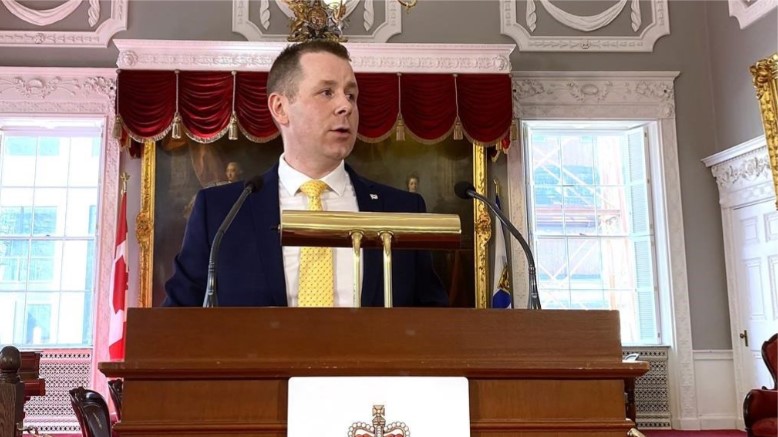Christmas trees left in homes can cause hazardous fires
Posted Jan 10, 2021 05:55:00 PM.
While some people may be trying to extend the holiday spirit by leaving their natural Christmas trees in their homes, it can easily create a large fire hazard that could make the season even worse.
“Dried out Christmas trees present a real hazard,” Douglas MacKenzie, acting fire marshal for the Government of Nova Scotia, told NEWS 95.7. “It’s a huge fuel-load within your home and if anyone has ever thrown a spruce bough on a campfire and seen how quickly that erupts, that happens in a confined space in your home.
“It can greatly increase the heat in the room where you won’t be able to escape or pass through that room. It cuts off some of your emergency escape routes.”
In Nova Scotia, MacKenzie said within his program they see three to four fires that can be attributed to Christmas trees. However, sometimes the damage is so substantial that they can’t entirely determine if the Christmas tree was the cause.
“The potential for the tree, it really just erupts into flames,” MacKenzie said. “A lot of people don’t realize that.
“Within 20 to 30 seconds, that entire tree can be aflame and the room that it’s in is non-enterable without specialized equipment.”
MacKenzie said some of the hazards fire investigators come across include damaged electrical cords or lighting, candles, extensions cords and non-CSA or ULC approved devices. These items can cause sparks which result in ruinous fires.
While there’s no exact date for when a Christmas tree should be removed from a home, certain appliances can affect how quickly a tree dries out — even if it’s well-watered — and becomes a fire hazard.
Homes with heating appliances such as wood stoves, propane or natural gas tend to dry out trees faster. Trees should be removed a few weeks after Christmas Day or when the needles become brittle and begin to fall.
According to the National Fire Protection Association (NFPA) in the United States, fire departments across the country responded to an average of 160 home fires that started with Christmas trees every year between 2014 to 2018.
Electrical distribution or lighting equipment was involved in 45 per cent of home Christmas tree fires. Around 75 per cent of Christmas tree fires occurred in December or January.
To dispose of a Christmas tree, people should carefully remove any lighting by holding the sockets rather than yanking on the cords. Then, it should be moved outdoors away from the home as delicately as possible.
One option people can consider is leaving their natural Christmas trees in their backyards to support local wildlife and the environment.
The Nature Conservancy of Canada said leaving natural Christmas trees in one’s backyard provides shelter and protection for birds in the winter, and benefits toads and insects in the later seasons.
MacKenzie said if people choose to leave it in their backyards, they should leave it far away from their home. If it’s propped up against the siding of a house, it can still possibly create an exterior house fire — sometimes accidentally and other times maliciously.
The NFPA said that between 2014 to 2018, 15 per cent of Christmas tree fires were intentional. Moreover, the Christmas tree fires between those years caused two deaths and 14 injuries.








